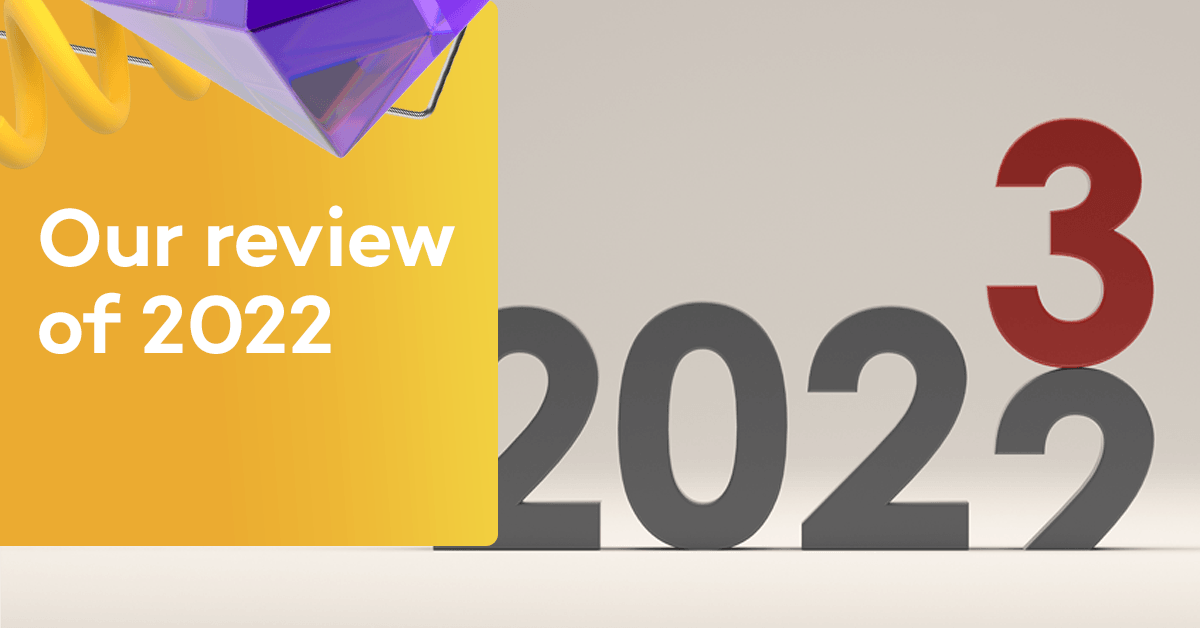Blog
Our review of 2022
13 December 2022
2022 started with rising inflation and the Bank of England base rate followed suit with interest rate increases. That scenario has continued throughout the year with steeper rises than many had predicted.
Inflation is at a 40-year high of 11.1% in October and base rate is at a 14-year high of 3%. To try to bring inflation down the Bank of England began to raise base rate from 0.1% in December 2021 and there have been eight consecutive rises with more expected to follow.
At the same time as base rate started rising, so did swap rates, which have more of an impact on our lending. But we managed to keep rates competitive and even reduced them at the start of this year.
The year also started afresh with a goodbye to pandemic lockdowns but alas not Covid, which is still amongst us, but something we have to learn to live with. It was a strange two years living in bubbles, locked away in our homes, but who would have thought we’d see such an active housing market with soaring property prices?
The stamp duty holiday aimed to stimulate the market and it certainly did that by creating high demand. Annual house price growth remained high in 2022 reaching a peak of 15.2% in July (ONS) but is now slowing down.
High inflation and interest rates have had an impact on the increasing cost of living but global pressure is a major part of this. In February 2022, Russia illegally invaded Ukraine and the fallout around the world has resulted in shortages, and therefore escalating costs, in fuel, gas, electricity and food, among other things.
Politics, mortgage lending and rates
Nearer to home, politics has had its influence on rising mortgage rates. Boris Johnson’s enforced resignation as Prime Minister saw his replacement, Liz Truss, setting a record for the shortest PM reign ever at 45 days. Her Trussanomics proved to be her downfall as reaction to the mini-Budget caused financial markets to fall into chaos, the pound slumped to almost $1 and base rate rose by 0.75% (the largest hike since October 1989 when base rate increased by 1.13 basis points from 13.75% to 14.88%).
Mortgage rates had been slowly rising since early 2022 but the aftermath of the mini-Budget saw many lenders pulling their products, some even stopped lending completely. Enter Prime Minister number three this year, Rishi Sunak, and financial markets began to settle somewhat and swap rates started to come down. This was the cue for products to return to the market, and mortgage pricing has come down too.
Up to here
2022 has been a turning point in that we are moving away from a long, historically low-interest rate environment, to what some might consider more ‘normal’ rates. Base rate at 3% now, compared to 14.88% in 1989, is still relatively as low but younger people won’t have experienced anything other than low rates, so it’s a shock for them.
House prices
House prices have also been rising with ONS figures showing the average price in January 2022 at £274,000, an annual rise of 9.6%. The latest ONS data available is for August, where the average house price was £296,000– up 13.6%. But house price growth is now falling as demand is slowing and people put their buying plans on hold due to the cost-of-living crisis.
This is having an effect on the rental market where there has been soaring demand this year, with fewer properties available to rent. Rents are going up due to this higher demand coupled with the increase in landlords’ costs. We keep reading about landlords selling up but now is a great time to buy and we are seeing more professional landlords expanding their portfolios.
If you would like to understand more or discuss a case, please get in touch with your local BDM.
